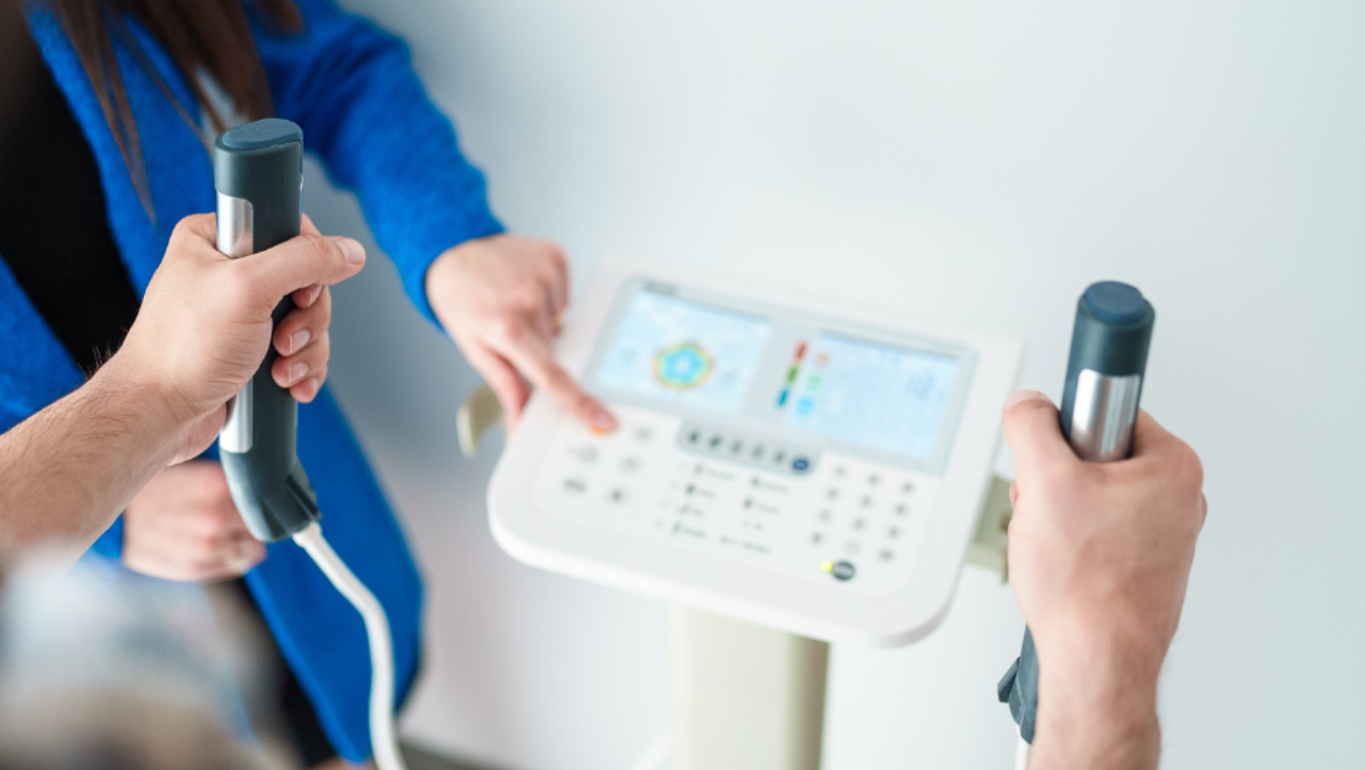Dietetics
-
Posted: October 20, 2025Read more »
Guest writer: Rob van Berkel, Research dietitian and writer on nutrition and health
Pay attention to body composition when using weight-loss medication
The use of weight-loss medication has increased significantly in recent times, both through prescription and other channels. These drugs are designed to accelerate and facilitate weight reduction — and they are indeed effective! However, they lead not only to the loss of fat mass but also to muscle mass, often to an excessive degree. Therefore, monitoring body composition is crucial to enable timely and targeted interventions.
What Do Weight-Loss Drugs Do?
The best-known weight-loss medications are the so-called GLP-1 receptor agonists (GLP-1 RAs), including liraglutide, semaglutide, and partly tirzepatide (which also contains a GIP-RA component). GLP-1 RAs mimic the natural hormone GLP-1 (glucagon-like peptide-1), promoting satiety and insulin secretion while suppressing glucagon release and delaying gastric emptying. Other drugs act
-
Posted: September 22, 2025Read more »
Guest author: Berdien van Wezel, Owner of Healthy Living Dietitians Practice (Gezond Leven Diëtisten)
How a BIA body analysis keeps boosting my patients’ motivation
When patients come to the dietetics practice for a first consultation, they often have questions such as: how can I lower my body fat percentage and increase muscle mass? Or should I eat more fat if my body fat percentage is too low?
Food diary
I advise patients, before the consultation, to keep track of what they eat and drink in a nutrition app or simply in a notebook. This helps me gain insight into their dietary intake, and also to see what their eating pattern is. It helps not only me but, above all, the patient. It is often the first moment of awareness of their eating habits. For example, they see that they eat when it suits them, experience that they do not have the right foods at home, or quickly buy a snack in the supermarket because they forgot to bring food.
At the intake I discuss the eating habits and the -
Posted: August 20, 2025Read more »
Guest author: Berdien van Wezel, Owner of Healthy Living Dietitians Practice (Gezond Leven Diëtisten)
Regular BIA measurements: what do they deliver?
Daphne, patient:
“The BIA measurement is a fixed part of the consultation. I put on easy shoes and don’t wear pantyhose. I always look forward to the measurement. I see the result immediately from the dietary advice that I try to follow faithfully.”The scale: curse or blessing
What amazes me every time: patients come for the intake. They are often a bit hesitant to step on the scale. After all, they already know that the weight is too high. They often say, “we’ll do that measuring next time.” I understand their hesitation, but I also know that a body analysis measurement shows so much more than weight alone. They are often surprised that, for example, muscle mass is much higher than expected. This is a first boost and is motivating. About 20% of patients stop the treatment after 2–3 weeks if they do not see results in weight. They follow
-
Posted: August 05, 2025Read more »
Guest author: Berdien van Wezel, Owner of Healthy Living Dietitians Practice (Gezond Leven Diëtisten)
Why I choose a BIA monitor in my practice
I have been using a BIA monitor for years and it has become such a fixed part of my consultation and work that I would feel amputated if I were to use only a scale. Furthermore, for me it adds quality value.
When did I start with it?
About 13 years ago I opened a shop on a shopping street. From one day to the next the health insurer removed the dietitian from the basic package. This meant that the patient only received reimbursement for consultations with the dietitian if they also had supplementary insurance. Within a few months the world changed completely because of this. From reimbursed care to self-paid.
As a company we then started thinking about how we could add value for the patient to the consultation. We created packages with, for example, 5 or 10 consultations for achieving a goal. We also linked other services and products to this, -
Posted: February 28, 2025Read more »
Guest Author: dr. Odette Bruls, (science) journalist, Lecturer at Tilburg University
Malnutrition and Sarcopenia: The Importance of Muscle Mass and Strength
Malnutrition and sarcopenia often go unnoticed in patients or other vulnerable individuals, even though they pose significant risks. Despite growing awareness, patients are not always diagnosed in time. Recognising the signs of malnutrition and sarcopenia—such as reduced appetite and difficulty with physical exertion—is crucial. Equally important is the ability to measure relevant clinical indicators, such as muscle mass and strength, easily and accurately.
Malnutrition and Sarcopenia: Complex Conditions with Various Causes
The European Society for Clinical Nutrition and Metabolism (ESPEN) defines malnutrition as an acute or chronic condition in which a deficiency or imbalance of energy, proteins, and other nutrients leads to negative effects on body composition, function, and clinical outcomes (Cederholm et al., 2016). Malnutrition,
-
Posted: February 17, 2025Read more »
Guest Author: dr. Odette Bruls, (science) journalist, Lecturer at Tilburg University
Obesity and Body Composition
Overweight and obesity are growing problems worldwide. In Europe, half of the adults in 2019 were overweight, with 17% classified as obese (CBS, 2024), and the expectation is that these figures will continue to rise. Overweight and obesity are typically expressed in BMI, based on the ratio between total weight and height. But that doesn’t tell the full story. The ratio of fat to muscle mass, as well as the distribution of fat mass, can vary greatly between individuals with the same BMI, including those who are obese.
There is increasing debate about a more precise definition that better reflects potential health risks. At the start of 2025, a group of experts proposed distinguishing between preclinical obesity, where no metabolic dysfunctions are present, and clinical obesity, where such dysfunctions exist (Rubino et al., 2025). To assess individual health, this group









